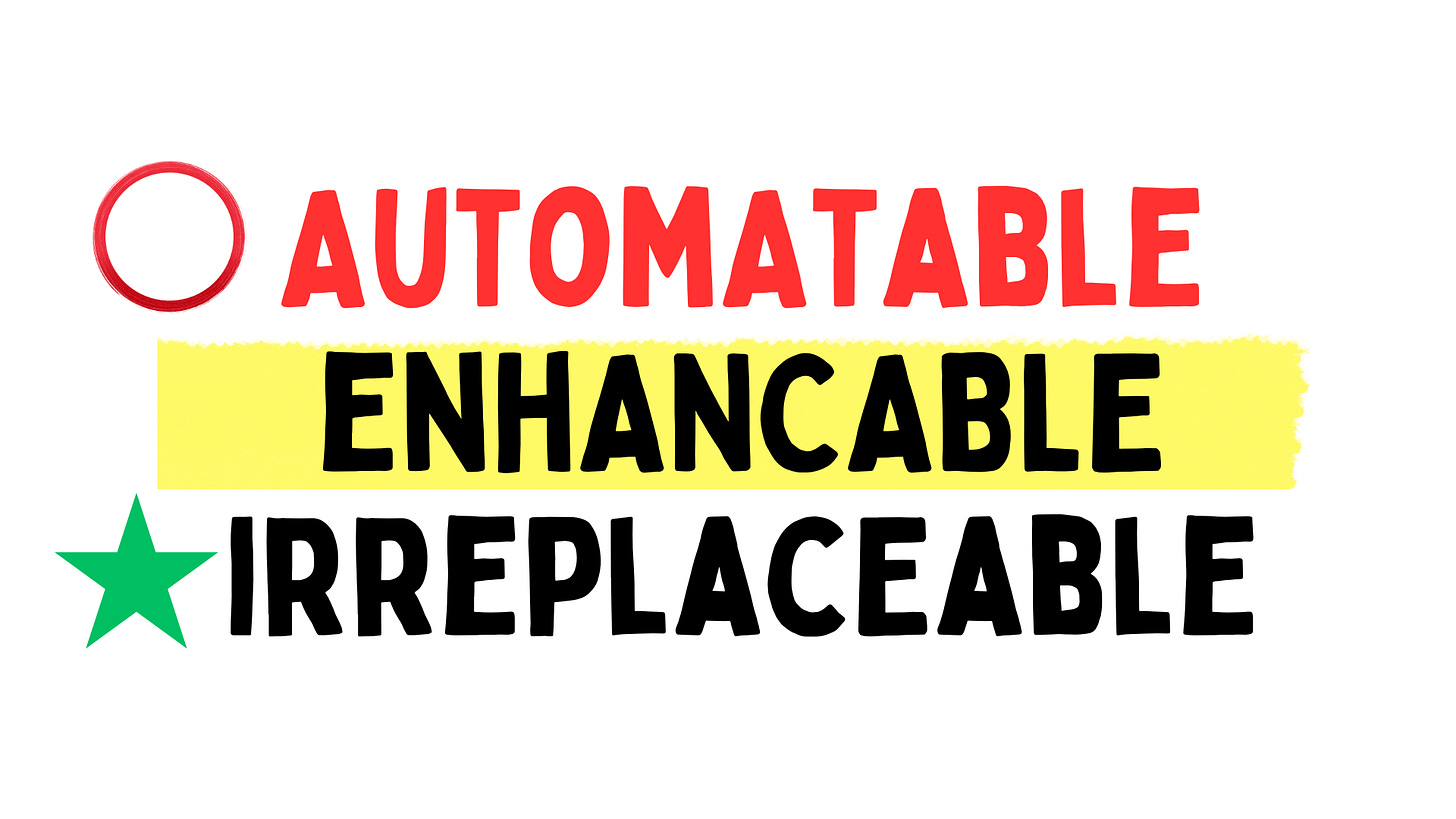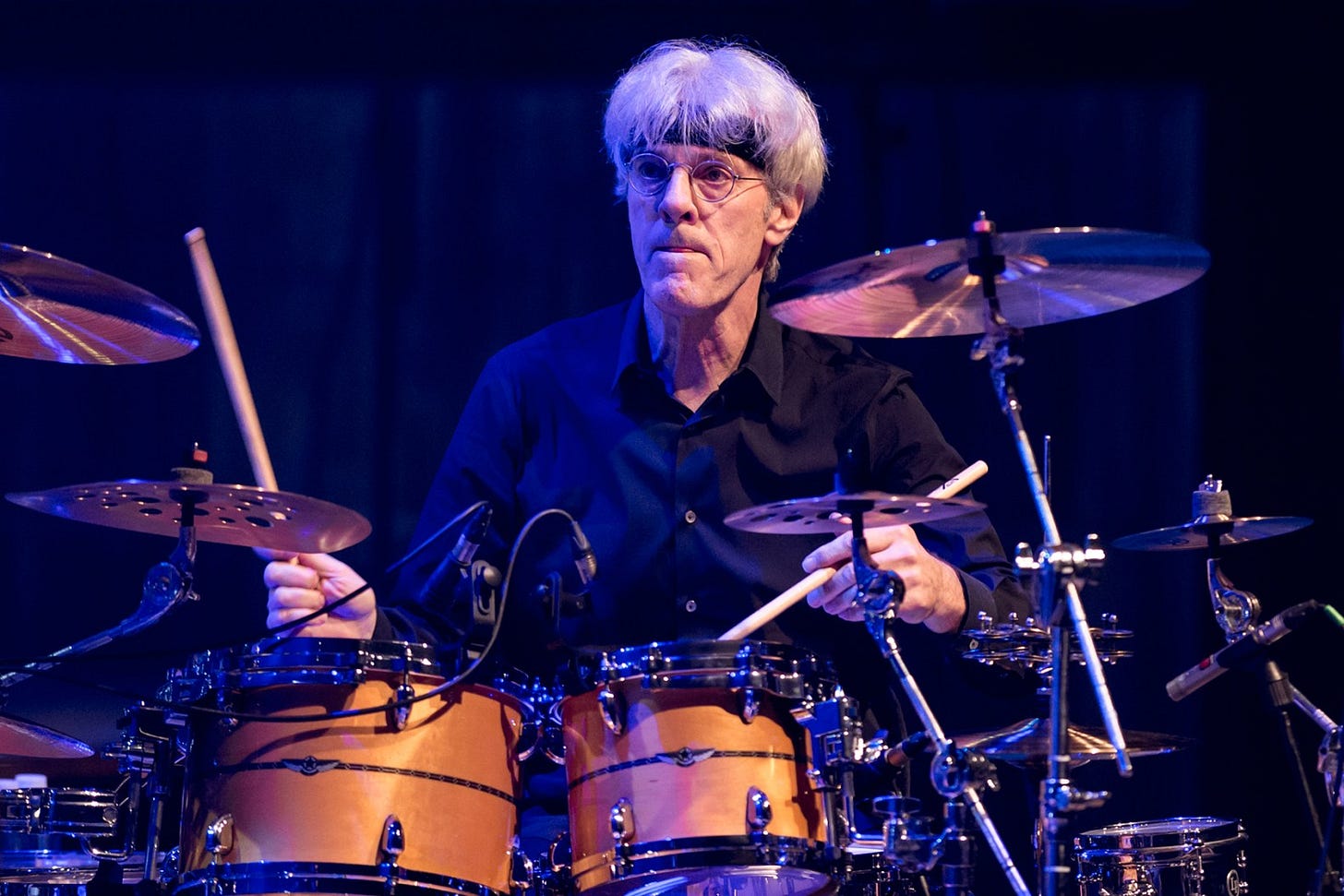Could Your Creative Signature Become a Preset?
How to automate, enhance, and protect your creative value in an AI world
Could your creative signature become a preset?
If the answer is yes, you need to work intentionally to make the answer no.
We're living through the most significant shift in creative work since the rise of the internet. Every day, new AI tools emerge that can generate images, video, text, and music with astonishing competence. AI is transforming how creative work gets done, who can do it, and what skills matter most in this strange new economy. The question isn't whether this will impact you: it will. The question is how you’ll stay indispensable when machines can mimic your craft.
Most discussions about AI and creativity fall into two camps: the doomsayers predicting an artistic apocalypse, and the evangelists who promise a friction-free future of creative liberation and minimal job loss. Both miss the nuance. Reality is more layered, and far more interesting. The framework below will help you identify which parts of your work to automate, which to enhance with AI, and which to fiercely protect.
The Three Categories of Creative Tasks:
I've talked to hundreds of creatives across disciplines who are navigating this shift and wrestled with it deeply myself. Most creative tasks roughly fall into three categories:
🔴 Automatable: Pattern Work
If someone else could follow your instructions and get 70% of the same result, the machine probably can too.
These are the tasks that follow clear guidelines, have predictable outputs, and can be systematized. If you can write a manual for it, a machine can do it. The paradox is that, while these tasks seem more obviously automatable on paper, they’re often the hardest for creatives to accept can be automated. Think: generating a first draft of a client brief, summarizing a hundred-page report into key insights, designing a book cover to fit established genre conventions, composing looping background music in a set mood and tempo, color-grading a video to match a brand palette, or automatically cutting a highlights reel from a longer recording.
You might look at these examples and think, “there’s no way a machine could handle that complexity as well as I can.” But if another person could get most of the way there by following your instructions, so can AI. That remaining gap is where your judgment lives, and where you decide whether to refine the machine’s work or start fresh with your full bandwidth.
How to spot automatable work:
Could you teach an intern to do this work with simple training?
Do you find yourself copying and pasting from previous versions?
Is the "right" answer based on rules or consistency rather than creative judgment?
Would the result be roughly the same regardless of your mood or energy level?
Is creative success measured by accuracy and consistency rather than originality?
Automatable work occupies you. Find the tasks you do on autopilot: writing image alt-text descriptions, generating initial concept descriptions from scattered creative briefs, pulling together similar reference images from your massive inspiration folder, or creating basic wireframes that follow your usual layout patterns. This week, pick one repetitive task from your last creative project and figure out how to never do it manually again.
Automatable doesn't mean uninspired, it means pattern-based. But this work is vulnerable. If too much of your portfolio lives here, you're training the market to see you as replaceable.
🤝 Enhanceable: AI + You
Where AI expands your range and speed without replacing your judgment.
This is where the magic of human + AI collaboration happens. Enhanceable work keeps you in the creative driver's seat, leveraging AI as an extension of your mind. You're prototyping ideas, exploring aesthetic directions, and testing concepts faster and more cheaply than ever before. AI augments your capabilities by handling volume and scale so you can focus on the nuances of origination and curation.
How to spot enhanceable work:
Do you need to generate multiple options before choosing the best one? Would having 50 variations to choose from be better than creating five from scratch?
Is there a tedious setup phase before you get to the creative decisions?
Is there a research or exploration phase that could be accelerated?
Do you wish you could explore more directions but run out of time or money?
Are you making creative decisions but the execution follows patterns?
Could you use help brainstorming, but the final choices need your taste?
Enhanceable work multiplies you. This is where AI becomes your sparring partner, not your replacement. Generate hundreds of visual mood boards in a fraction of the time to explore an aesthetic direction, prototype different narrative arcs for a game, simulate a brand identity across a hundred contexts to test its durability, experiment with AI to audition dozens of color palettes for an illustration before committing brush to canvas, or feed your personal photography style into AI to explore new compositions you then shoot yourself. Pick one AI tool this week and use it to generate far more possibilities than you could alone. Then shape those possibilities into something only you would make.
⭐ Irreplaceable: Your Signature
The work no one else could originate but you. Not another artist, and not a machine.
Your creative signature. This is the work that emerges from your unique perspective, lived experience, and creative intuition. This includes your ability to read a room, understand unspoken client needs, synthesize disparate cultural references, or bring emotional intelligence to creative problems. Think: developing a brand's visual identity that captures their essence, writing a story that lives only in your heart, crafting copy that resonates with a specialized audience, directing talent to capture authentic emotion, or making those intuitive creative decisions that simply "feel right."
How to identify irreplaceable work:
Does this require reading between the lines of what someone actually wants?
Would a client notice if someone else did this work instead of you?
Are you drawing on personal experiences or knowledge that only you have?
Would two different creatives approach this completely differently?
Is the value in your specific point of view, not just technical skill?
Does success depend on your ability to connect with people on an emotional level?
Would this work lose its meaning if it were anonymous?
The artists who thrived through historic technology disruption made choices no manual could teach and no algorithm could guess. While most drummers relied on click tracks for perfect timing, Stewart Copeland of The Police used them as a baseline to play against, weaving in off-beat hits and sudden shifts no drum machine could anticipate. While many photographers chased flawless studio setups, Annie Leibovitz embraced shadows and imperfections to tell stories no lighting guide could replicate. While others followed traditional synthesizer approaches, Wendy Carlos bypassed conventional teaching and sculpted unique sonic landscapes no preset could recreate.
Irreplaceable work sustains you. This is where your family traditions live, where your dreams and late-night revelations become creative fuel. No model trained on internet data can access what lives in your creative soul. Block out an hour this week for a project only you could conceive. Something you couldn't brief to anyone else if you tried.
Irreplaceable work is your strongest moat, but it's also the hardest to scale.
Map Your Creative Process
Try this exercise: Grab your last creative project. Write every step from start to finish. For each step, use the questions above to ask yourself:
Could this be done exactly the same without me? Circle it in red: that's automatable.
Could AI help me do this faster or more efficiently while I stay in creative control? Highlight it: that's enhanceable.
Does this require something only I can bring? Star it: that's irreplaceable.
Many creative tasks don't fit neatly into one bucket. If you're having trouble deciding, look for these hybrid patterns:
The setup is systematic, but the creative choices are yours.
The research can be automated, but interpreting it requires your insight.
The format is standard, but the content needs your voice.
The technical execution is repeatable, but the concept came from your imagination.
Take creating a mood board. Pulling reference images might be automatable, curating them for a specific aesthetic direction is enhanceable, but knowing which image will resonate with this particular client's unspoken vision may be irreplaceable.
Don't get stuck trying to make everything fit neatly. Look for patterns instead. You might discover that 40% of your workflow is automatable, 35% is enhanceable, and 25% is irreplaceable. Think about whether you’re ok with that balance, and how to make the enhanceable and irreplaceable work the meat of your creative practice.
This isn't about fighting automation. AI is not going away. It's about ensuring the majority of your creative value comes from work where you remain essential, either as the director of AI collaboration or as the irreplaceable human insight. Your Creative Firewall is developed through conscious choices about where to invest your time, what skills to develop, and how to position yourself in this new creative ecosystem. It's built on a commitment to a practice that makes your role more valuable, not less.
The Questions That Matter Most
As you think about your creative future, beyond categorizing individual tasks, ask yourself:
What aspects of my work could only come from my specific background and perspective?
What would my creative practice look like if I spent 80% of my time on enhanceable and irreplaceable work?
What would happen if you could outsource tasks that drain your creative energy?
What makes your creative approach distinctively yours rather than just technically proficient?
How could you become better at directing AI rather than competing with it?
Can your creative signature become a preset, or is it irreplaceable? Make sure your work proves which one.
What's one task you're ready to automate, and one you'll defend as irreplaceable? Share it below. I'd love to spark a conversation about how we're all navigating this shift. Subscribe if this resonated and share with someone who’d find it valuable!





